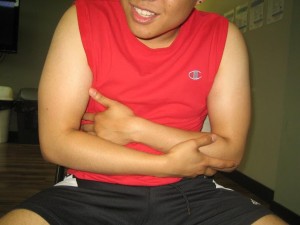Elbow tendinitis or tennis elbow typically falls into one of two categories. This condition affects the exterior part of the elbow while golfer’s elbow is a condition that affects the interior part of the elbow. Aside from sports, engaging in daily activities can also lead to tendinitis.
Various arm movements including painting, using plumbing tools, weaving and raking can lead to tennis elbow. When it comes to elbow tendinitis, it occurs once the muscles in the forearm are required to repeatedly contract and relax over an extended period of time. The symptoms of pain and stiffness close to the bony prominence of the elbow can range from mild to debilitating and can be a challenge to manage.
RICE method
The RICE method (rest, ice, compression, elevation) is the initial mode of treatment for elbow tendinitis. The individual should rest the affected arm from activities that are known to trigger the pain.
Wrap an ice pack around the affected elbow using a compressive bandage for 15 minutes several times in a day. You have to keep the elbow above the level of the heart to reduce the amount of swelling.

Stretching
Stretching of the forearm muscles a number of times in a day can help minimize the muscle tension that can worsen the indications of elbow tendinitis. The individual should hold every stretch for about 15 seconds. He/she must place the palms together in a prayer position and press on the chest. This stretch must be carried out with the fingertips pointing outward or upward. The next step is to extend the elbow until straight with the palm facing down. The individual must gently press down the rear of the affected head with the other hand until a stretch is felt.
Medications and injections
The doctor might recommend an over-the-counter pain or anti-inflammatory medication. If these medications are not effective, the doctor will suggest a prescription anti-inflammatory. Nevertheless, these medications are not suitable for long-term use since they can cause serious GI tract problems.
Steroids such as cortisone are highly effective anti-inflammatory medications. In some cases, the doctor might decide to inject the affected muscles with a steroid to reduce the symptoms.
Physical therapy
If the application of ice, stretching and medications could not provide lasting relief, the doctor might recommend a course of physical therapy. There are specific exercises that can strengthen the forearm muscles. The physical therapist might also utilize ultrasound and muscle-stimulating methods to help with the healing of the muscle.
Acupuncture
Acupuncture is currently being studied as a potential treatment for elbow tendinitis, but the benefits are not yet proven. A usual course of treatment with acupuncture involves two treatments per week for 3-5 weeks.
